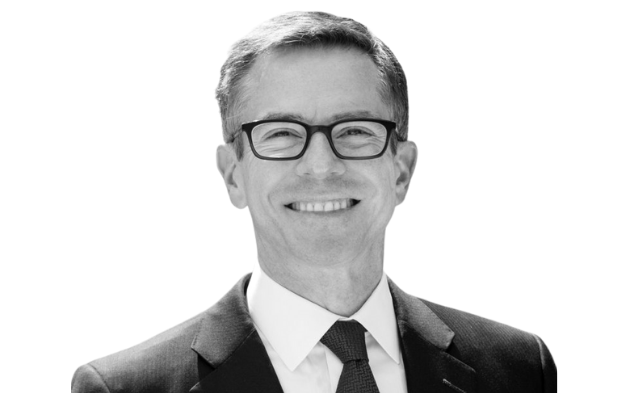Randall Kroszner, Federal Reserve governor from 2006 to 2009, praises the Fed for acting decisively to bring inflation under control, but predicts a lot of pain ahead for global markets.
It will be “very difficult” for the United States to avoid “at least a mild recession” as monetary policy is tightened to avoid runaway inflation, according to former Federal Reserve governor Randall Kroszner.
Kroszner said there were only two times in his 35-year professional career that he hadn’t been optimistic about the future, speaking at Conexus Financial’s Fiduciary Investors Symposium held between May 23-25 at the Chicago Booth School of Business. One was when he was at the Fed staring ahead at the Global Financial Crisis, and the other time is now.
He pointed to the impact of the war in Ukraine and rising sanctions, along with the aftermath of the pandemic and ongoing supply disruptions and lockdowns in China. While it was the right decision for the Fed to decisively tighten monetary policy, the combined impact on markets would be painful, he said.
“I think it’s going to be very difficult to do it without at least a mild recession,” Kroszner said. But while he admitted “there’s a chance for a lot more negative stuff” and there is a lot of uncertainty, he is not anticipating a deep or prolonged recession with persistent inflation–the so-called “stagflation” scenario–despite inflation being at its highest point in 40 years.
“Inflation expectations certainly have moved up, and in the short run they’ve moved up very significantly, but in the intermediate to longer run they’re basically at the upper edge of the range that they’ve been in over the last decade,” Kroszner said. “So not wildly out of sync with where they have been.”
Kroszner is the Deputy Dean for Executive Programs at the University of Chicago Booth School of Business and Norman R. Robins Professor of Economics. He was Governor of the Federal Reserve System from 2006 to 2009, and represented the Federal Reserve Board on the Financial Stability Forum–now the Financial Stability Board–as well as on the Basel Committee on Banking Supervision.
Speaking with American historian, academic and author Stephen Kotkin, Kroszner praised the Fed for moving quickly in “50 basis point chunks.” By raising interest rates decisively, the Fed is ensuring it doesn’t lose its credibility and that inflation expectations don’t get out of control, he said, despite acknowledging there is evidence it would have been better for them to raise interest rates earlier.
While tightening monetary policy will be painful for markets, “it would be much more painful in the long run if they didn’t move quickly,” he said, noting it is politically more palatable to raise interest rates at a time when unemployment is low. While the Fed was created to act independently of political pressures, it still needs to take into account the environment in which it is operating, he said.
“Traditionally the Fed was there to take the punch bowl away when the party really gets going, only that hasn’t happened for 30 years,” Kroszner said. “For 30 years, the Fed has been like a good neighbour. The Fed is there to provide support if there’s a global financial crisis, there’s a panic. And so you’ve got two generations of policy makers, of market participants, of citizens, who don’t think of the Fed as having that responsibility.
“And actually, I think it makes it a bit tougher for the Fed to be able to pull the punch bowl away, than for [Former Federal Reserve chair Paul Volcker] to do it, but they have the opportunity to do it now. They should be moving quickly,” Kroszner said. “I think it’s going to be very difficult to avoid a significant slowdown and even potentially a recession.
Kroszner said the Fed learned hard lessons from its Great Depression mistake of being passive despite falling GDP and soaring unemployment, which resulted in a collapse in the money supply as people were trying to hold cash and banks were holding their reserves.
Staring ahead at the Global Financial Crisis alongside then Federal Reserve chair Ben Bernanke in the late 2000s, Kroszner said he and Bernanke were determined not to repeat the same mistake, and so undertook a variety of large-scale asset purchases now known as quantitative easing, “to make sure that the financial intermediation system continued to work, to make sure that we didn’t have crushing decline in the money supply, and deflation.”
They also ensured a “good exit strategy” such as withholding interest on reserves as a whole, to avoid hyperinflation as the Fed’s large balance sheet turned into excess money supply.
Kroszner said he felt these decisions were vindicated in the following decade as the worst predictions of hyperinflation didn’t play out. And he was heartened the Fed “ran the same playbook” when the pandemic set in, suggesting the programs he and Bernanke had put in place were “worthwhile to revive” rather than seen in retrospect as flawed policies.
Kotkin asked if the US “just got lucky” in the 2008-09 running of the playbook.
Kroszner said there were differences this time that explained the different inflation outcome. There was a much larger amount of monetary stimulus, a much larger amount of fiscal stimulus, and there were very different shocks to the economy owing to lockdowns.
“We were seeing this incredible contraction and expansion of the economy, which the economy is just not used to doing,” Kroszner said. “It’s just not structured to have these lockdowns and then rebirths, immediate rebirths. And so you have the supply constraints, you have a lot of disruptions that make it difficult for the economy to come back.
“And with so much more stimulus, you are then led to this situation where you have much higher inflation now. Even though the types of responses were similar–strong monetary responses to a crisis–the economy is recovering much more strongly [this time], I mean the unemployment rate is under four per cent.”
This explains the different inflation outcomes of the two crises, he said, but the key lesson from both crises remains the same: “Act boldly and act quickly, which I think the Fed did in both cases.”



